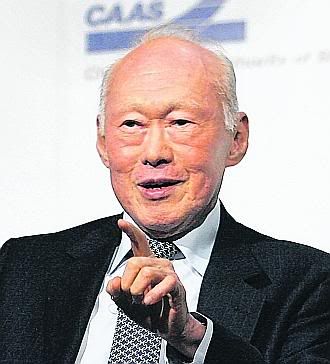- Joined
- Oct 26, 2008
- Messages
- 5,214
- Points
- 63
<table border="0" cellpadding="0" cellspacing="0" width="100%"><tbody><tr class="msghead"><td><table border="0" cellpadding="0" cellspacing="0"><tbody><tr class="msghead"><td class="msgF" align="right" width="1%" nowrap="nowrap"> </td><td class="msgFname" width="68%" nowrap="nowrap">temaseksg <nobr></nobr> </td><td class="msgDate" align="right" width="30%" nowrap="nowrap">Sep-23 12:37 pm </td></tr> <tr class="msghead"><td class="msgT" align="right" width="1%" height="20" nowrap="nowrap">To: </td><td class="msgTname" width="68%" nowrap="nowrap">ALL <nobr></nobr></td> <td class="msgNum" align="right" nowrap="nowrap"> (1 of 1) </td></tr></tbody></table></td></tr><tr><td rowspan="4" class="msgleft" width="1%"> </td><td class="wintiny" align="right" nowrap="nowrap">38112.1 </td></tr><tr><td height="8">
</td></tr> <tr><td class="msgtxt">Citi analyst doubts profitability of Singapore IRs
An analyst from Citicorp Anil Daswani expressed doubts about the profitability of Singapore’s two integrated resorts.
In a report on the prospects of Las Vegas Sands (LVS), which owns Marina Bay Sands (MBS) here, Citi said that assuming MBS contributes 20 per cent of LVS’s total Ebitdar in its first full year, every eligible Singaporean will have to go to the casino five times a year and spend more then the average visitor to Macau.
‘We liken the current sentiment towards the integrated resort to the Macau gaming boom in 2006/07 and urge investors to not be left holding this parcel when the music stops,’ he added.
According to Mr Anil, Singapore needs to attract locals to gamble regularly if it wants its casinos to succeed.
However, a hefty entry fee of $100 is likely to put off some Singaporeans. Furthermore, unlike Las Vegas or Melbourne, Singapore has a small population of only 4 million people.
It also cannot count on a hinterland like Macau which can depend on a steady stream of mainland gamblers. The Malaysians already have Genting and are unlikely to come over to Singapore just to gamble.
Singapore is an untested market as far as gaming goes. Forecasts for gaming revenue at the IRs so far range between US$1-2 billion in the first year.
Based on Citi’s analysis, to achieve US$1.56 billion in revenue each, both IRs will have to attract a combined total of 31 million visitors annually.
Ronnie Chan, chairman of Hang Lung Properties Ltd., Hong Kong’s fifth-biggest developer by market value, said recently in a Bloomberg Forum in Hong Kong that the two casino-resorts in Singapore will fail because they won’t be able to attract high-rollers.
“The big rollers are what make money in casinos, they will never come to Singapore, it’s a family entertainment” location. “You think big-rollers will go to Singapore where they have teeth and fangs coming out sideways? There are too many rules. I was in Sentosa island, I really think that it’s going to be a flop…..The whole integrated entertainment industry, I’m worried for them. The good thing about Singapore is that if you flop, you’re given a second chance,” he said.
Indeed, Macau will a more attractive destination than Singapore to the chronic gamblers of mainland China.
With global tourism in a slump following the economic crisis, Singapore may not generate the necessary tourist numbers to sustain the two IRs.
</td></tr></tbody></table>
</td></tr> <tr><td class="msgtxt">Citi analyst doubts profitability of Singapore IRs
An analyst from Citicorp Anil Daswani expressed doubts about the profitability of Singapore’s two integrated resorts.
In a report on the prospects of Las Vegas Sands (LVS), which owns Marina Bay Sands (MBS) here, Citi said that assuming MBS contributes 20 per cent of LVS’s total Ebitdar in its first full year, every eligible Singaporean will have to go to the casino five times a year and spend more then the average visitor to Macau.
‘We liken the current sentiment towards the integrated resort to the Macau gaming boom in 2006/07 and urge investors to not be left holding this parcel when the music stops,’ he added.
According to Mr Anil, Singapore needs to attract locals to gamble regularly if it wants its casinos to succeed.
However, a hefty entry fee of $100 is likely to put off some Singaporeans. Furthermore, unlike Las Vegas or Melbourne, Singapore has a small population of only 4 million people.
It also cannot count on a hinterland like Macau which can depend on a steady stream of mainland gamblers. The Malaysians already have Genting and are unlikely to come over to Singapore just to gamble.
Singapore is an untested market as far as gaming goes. Forecasts for gaming revenue at the IRs so far range between US$1-2 billion in the first year.
Based on Citi’s analysis, to achieve US$1.56 billion in revenue each, both IRs will have to attract a combined total of 31 million visitors annually.
Ronnie Chan, chairman of Hang Lung Properties Ltd., Hong Kong’s fifth-biggest developer by market value, said recently in a Bloomberg Forum in Hong Kong that the two casino-resorts in Singapore will fail because they won’t be able to attract high-rollers.
“The big rollers are what make money in casinos, they will never come to Singapore, it’s a family entertainment” location. “You think big-rollers will go to Singapore where they have teeth and fangs coming out sideways? There are too many rules. I was in Sentosa island, I really think that it’s going to be a flop…..The whole integrated entertainment industry, I’m worried for them. The good thing about Singapore is that if you flop, you’re given a second chance,” he said.
Indeed, Macau will a more attractive destination than Singapore to the chronic gamblers of mainland China.
With global tourism in a slump following the economic crisis, Singapore may not generate the necessary tourist numbers to sustain the two IRs.
</td></tr></tbody></table>

